By Doyle Sumrall, NTEA Managing Director
This article was published in the May 2018 edition of NTEA News.
Each year, I’m amazed by the new innovations and technological visions in the commercial vehicle industry. The Work Truck Show® has become the forum where these themes are highlighted. This year, we had six new truck reveals — each highly impressive. The Ride-and-Drive area delivered a great experience for those who wanted to get hands-on with the latest offerings. In addition, there was a drone demonstrating last-mile package delivery.
Green Truck Summit provided a full day of thought leaders sharing insights, outlook and solid examples of improving work truck productivity and efficiency. It’s impossible to capture everything that unfolded; you had to be there to get the full experience. However, I wanted to communicate a thread shared by almost every thought leader. Trucks are evolving at an ever-faster pace; they’re part of a system, not just a standalone tool. Early in her keynote presentation, Kary Schaefer, general manager of marketing and strategy at Daimler Trucks North America, emphasized connectivity.
Smart trucks are rolling out today with self-diagnostics and, when tied into OEM computers, offer productive issue notices. It would be great if your truck could send you an email or text alert before it breaks down. This type of embedded awareness is just one aspect of connected system capabilities; wise use of these systems is translating into competitive advantages.
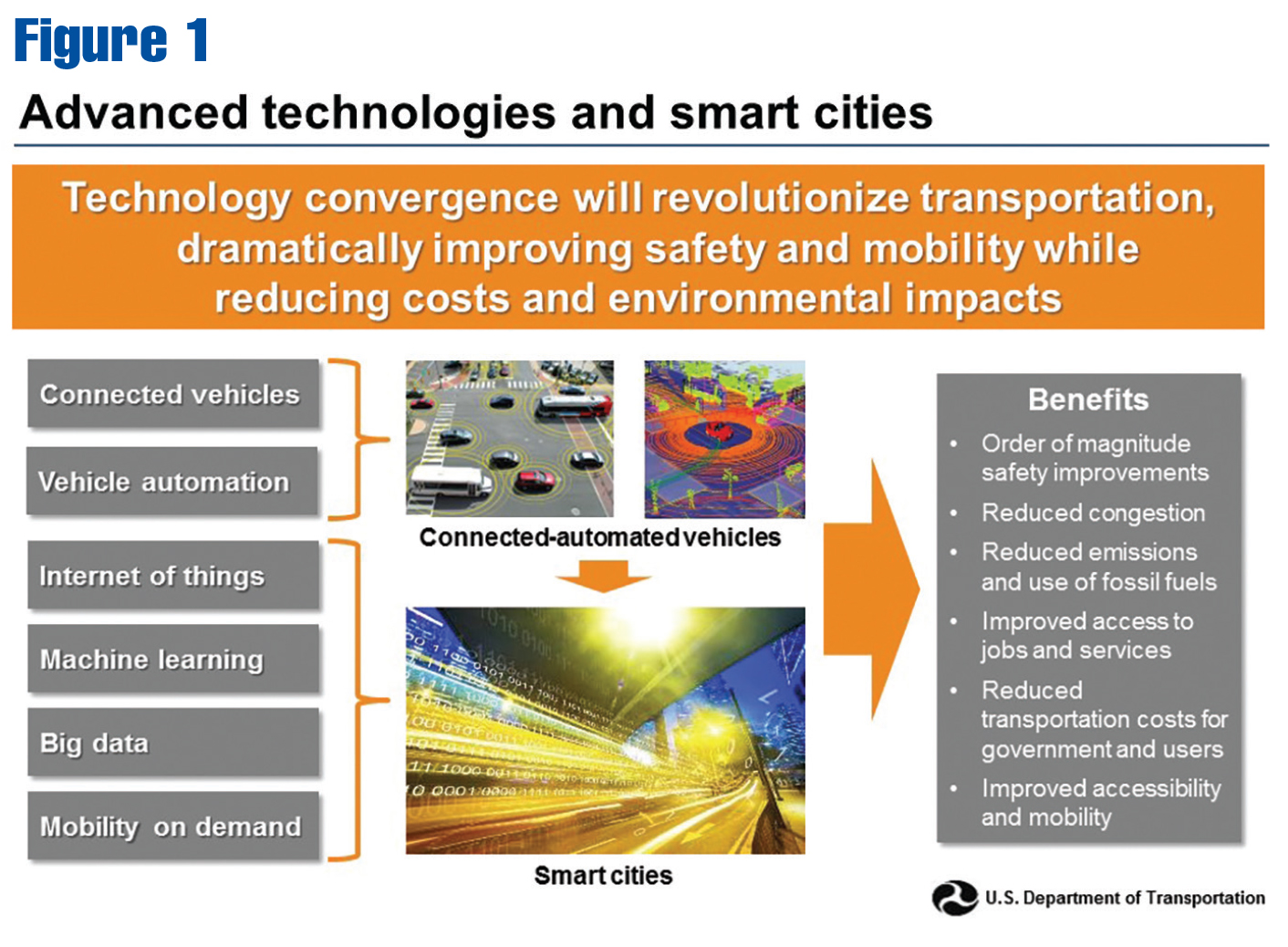
Giorgio Rizzoni, director of Ohio State University’s Center for Automotive Research, revealed the bigger picture of how connected trucks fit into the emerging trend of smart, connected cities (see Figures 1 and 2).
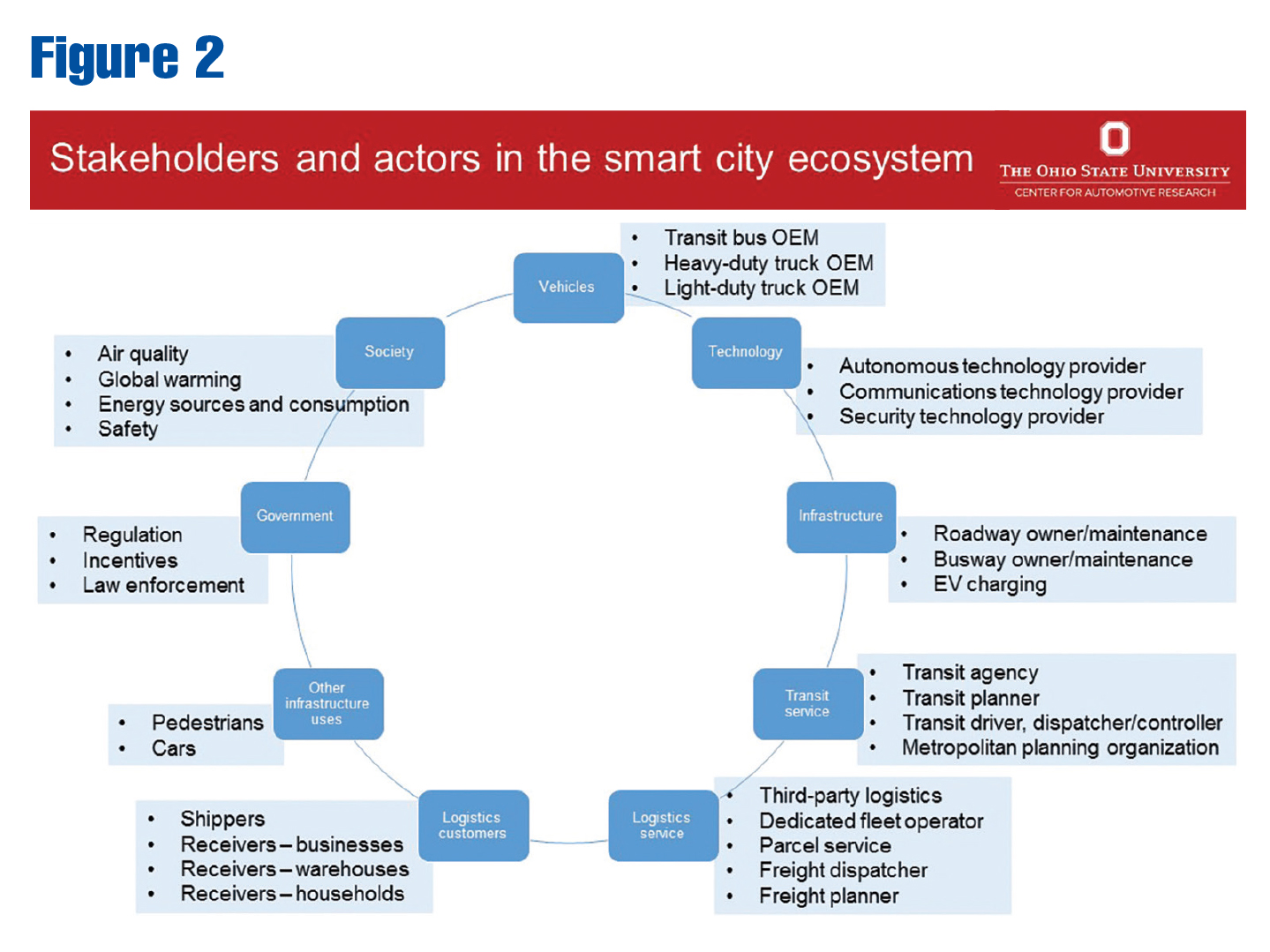
This concept includes basic offerings we all want — like safer vehicle interaction and faster traffic flow, in addition to lower fuel use and facilitation of on-demand mobility for elements related to people and goods. This is a complex process that can be made easy through automation and real-time modeling and management.
Another clear thread is electrification of trucks and truck equipment. Although Daimler and OEMs in general are committed to diesel and other IC powerplants, they are all looking to deliver electric drivetrains today and in the future.
Last year, Cummins Inc. indicated the future direction, announcing a commitment to developing hybrid and full electric powertrains. Julie Furber, executive director of electrification at Cummins, addressed the idea of the right powertrain technology at the right time (see Figure 3).
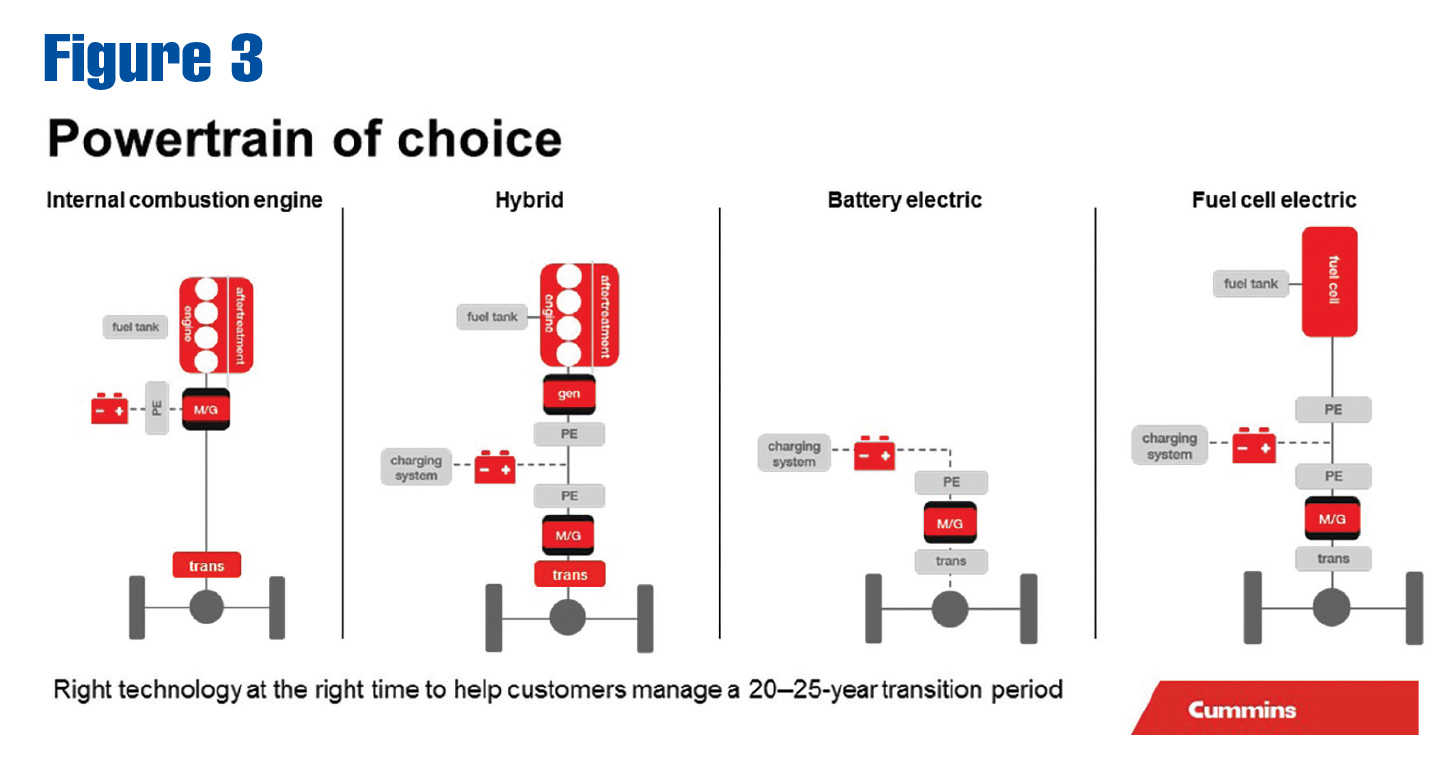
With the ability to collect large data from smart trucks, we’re able to make better choices to identify the most productive truck for specific applications.
As part of her presentation, Schaefer showed the lineup of full electric truck offerings (Figure 4) and indicated there are more to come.
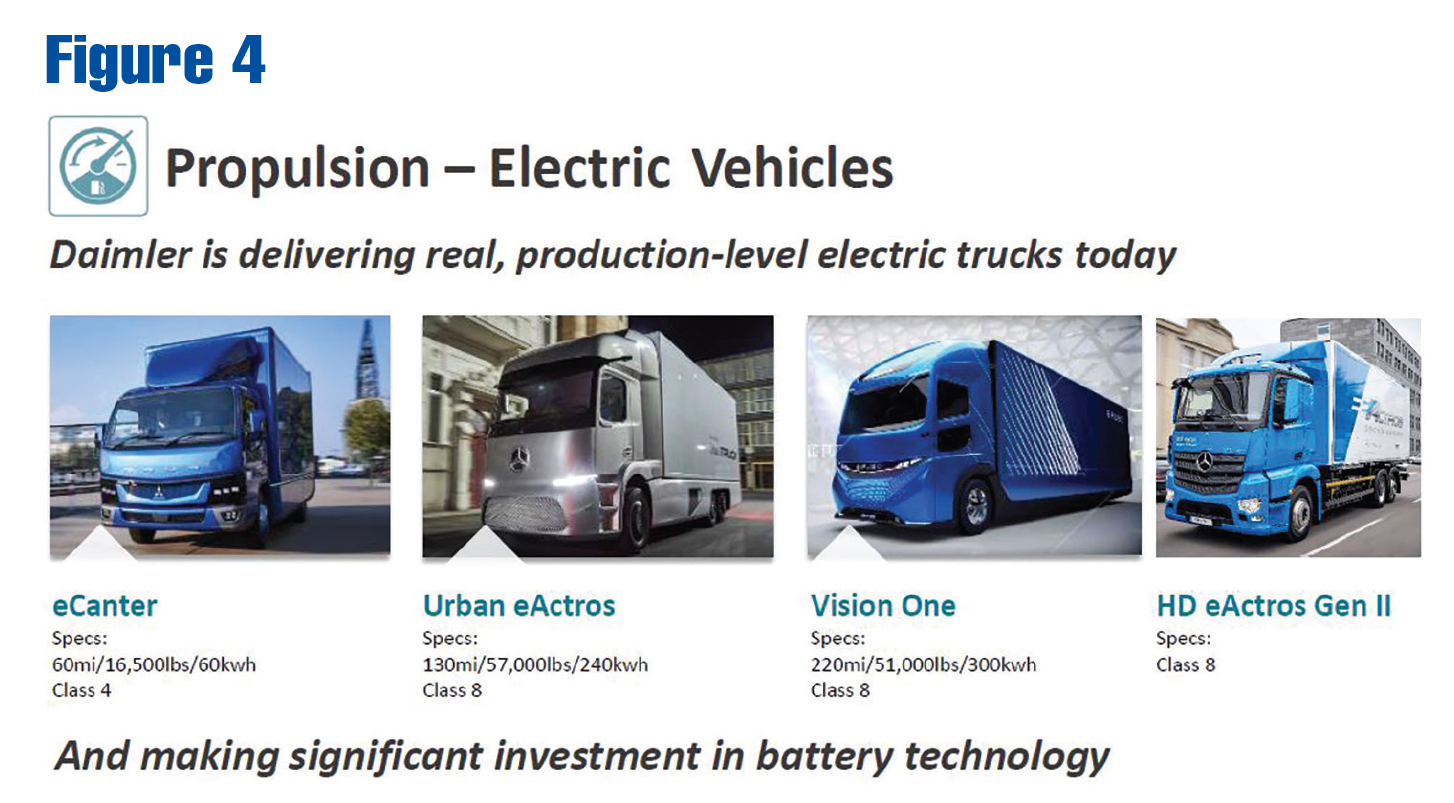
Keshav Sondhi (director of fleet engineering and sustainability at PepsiCo) and Scott Phillippi (senior director of maintenance and engineering, international operations, UPS Corporate Automotive) demonstrated how their fleets are evolving and now include fuels and technologies deployed in all truck segments. CNG, propane, electric and even pedal power are all viable options (see Figure 5).
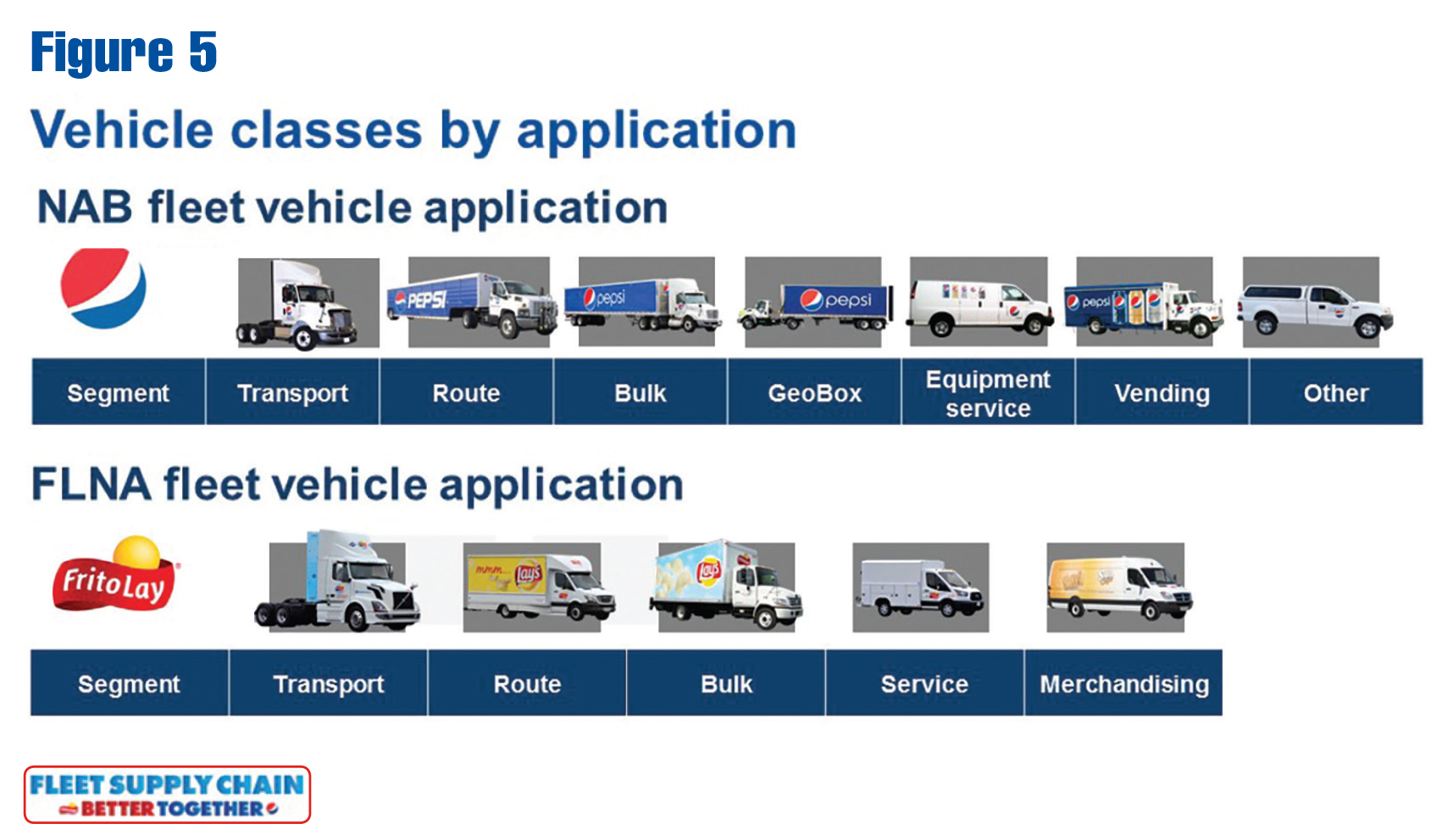
I could go on and on talking about all the rich content shared by Green Truck Summit fleet and industry presenters. I truly believe the migration toward smarter, safer and more productive work trucks was well communicated this year. If you attended, you likely walked away with more examples to use, sell or improve in your operation than you will have time to implement between now and next year’s event. Thank you to everyone who presented and participated.
Learn more
For more information on Green Truck Summit, visit worktruckshow.com/greentrucksummit. Sign up to receive email updates about next year’s event (scheduled March 5–7, 2019, in conjunction with The Work Truck Show 2019 in Indianapolis, Indiana), including when registration opens in the fall, at worktruckshow.com/wts19signup.